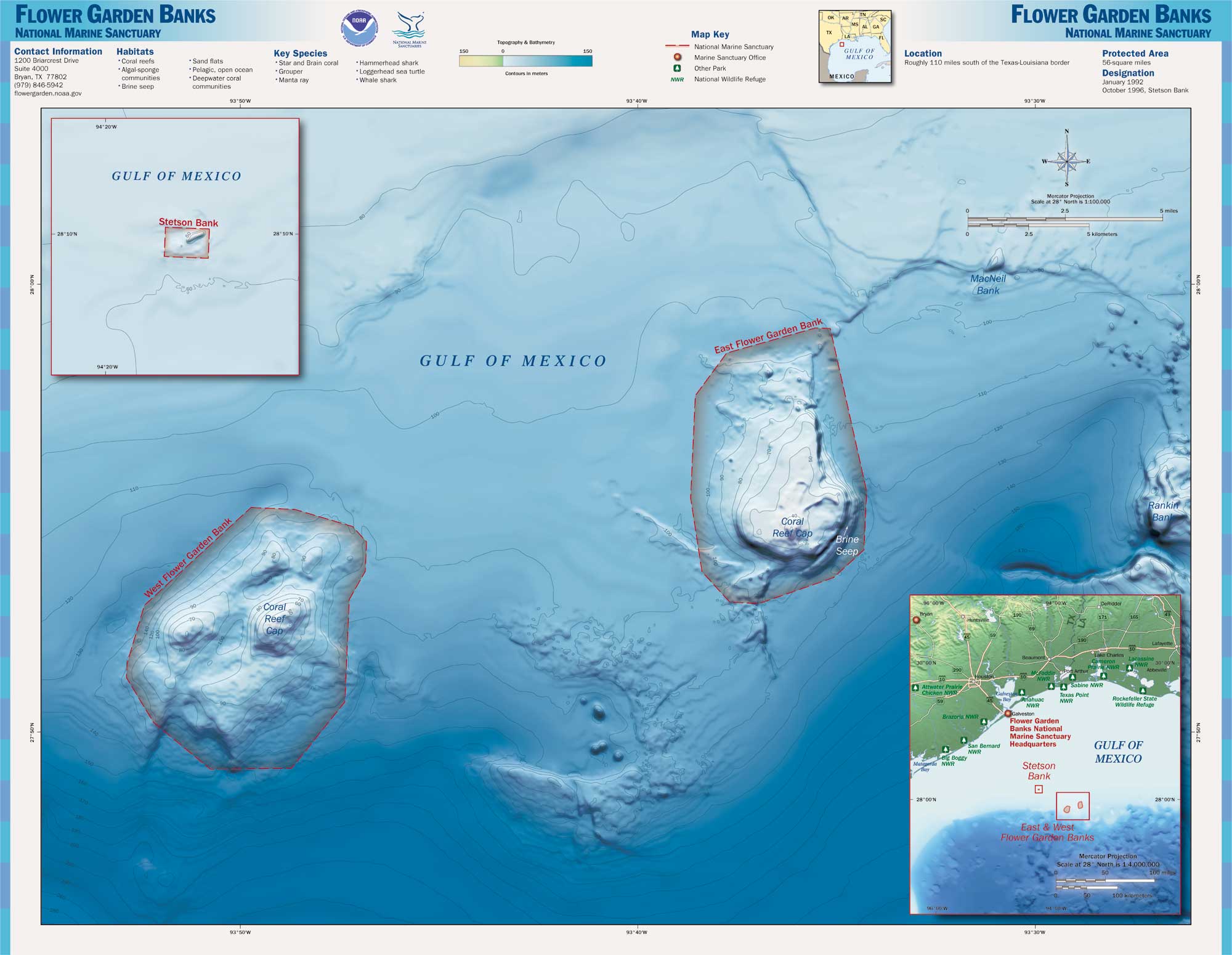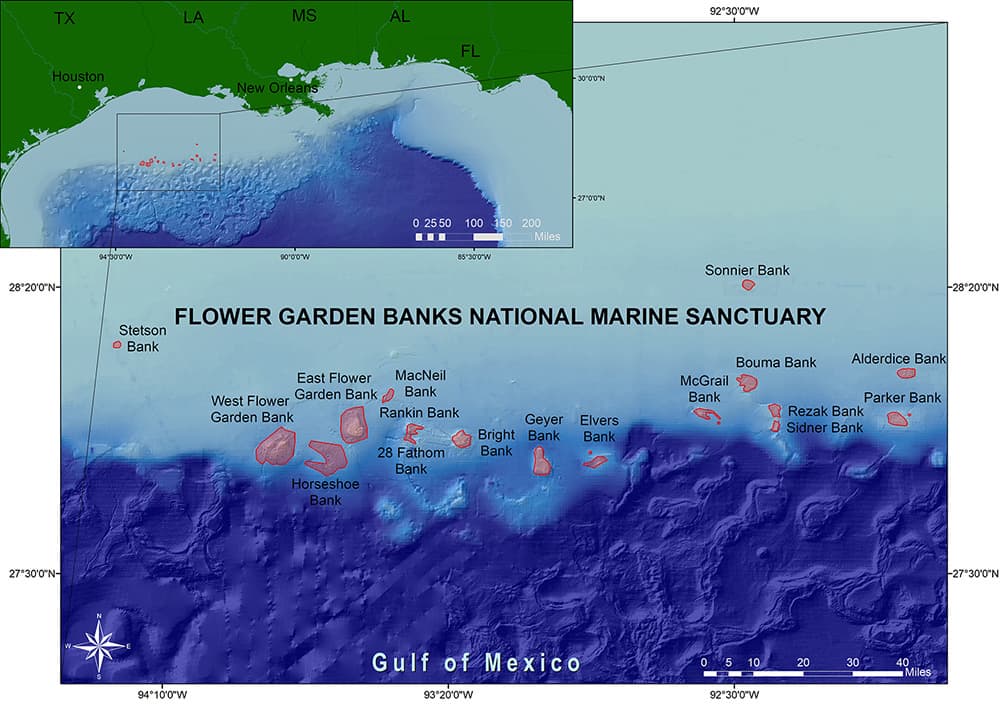January 23, 2022
The Flower Garden Banks National Marine Sanctuary, founded in 1992, is the only U.S. marine sanctuary site located in the Gulf of Mexico, situated 80 to 125 miles off the coasts of Texas and Louisiana. It is one of 15 national marine sanctuaries and two marine national monuments protected by NOAA's Office of National Marine Sanctuaries. When first designated, the sanctuary consisted of only East and West Flower Garden Banks, home to some of the healthiest coral reefs in the world. These two banks, situated about 13 miles apart, are located almost directly south of the Texas/Louisiana border.

The sanctuary was expanded in 2021, and now protects portions of 17 separate reefs and banks in the northwestern Gulf of Mexico. These banks are a combination of small underwater mountains, ridges, troughs, and hard bottom patches along the continental shelf, created by underlying salt domes. Together, they create a chain of protected habitats for ecologically and economically important species across the northwestern Gulf.
The Sanctuary includes thriving shallow water coral reefs, algal-sponge communities, and deeper mesophotic reefs full of black coral, octocoral, and algal nodule habitats.

Here is a good video marking the 30th anniversary of Flower Garden Banks NMS in Gulf:
During February, the Sanctuary has scheduled a series of online 'Seaside Chats':
Additional Flower Garden links:
Our Oceans need More Marine Protected Areas:
Ocean conservationists and marine scientists have concluded that designated Marine Protected Areas (MPAs) will be essential for preserving and restoring ocean ecosystems and the role oceans play in sustaining life on our planet. In June 2021, NOAA's National Marine Sanctuaries featured an important online presentation on this topic. Below is the program description and link to the video recording.
Why We Need to Protect More of the Ocean
With presenters:
Dr. Enric Sala, Explorer-in-Residence, National Geographic Society and Dr. Alan Friedlander, Chief Scientist, National Geographic Pristine Seas
Without the ocean, human life on Earth would be impossible. But increasing overexploitation and global warming are depleting ocean biodiversity and bringing the ocean to a tipping point, beyond which we may never recover. The establishment of marine protected areas (MPAs) is a proven and cost-effective tool to ensure a healthy ocean and prevent catastrophe, yet currently less than 3% of the ocean enjoys strong protection.
The main presentation in this video runs from 16:40 to 1:02:15 minutes, with question period following.
From 0 to 5:30 is a basic introduction; and from 5:30 to 18:55 minutes is an overview of the Papahānaumokuākea Marine National Monument and the progress to conserve endangered species there.
More related links:
For questions or feedback on this article, contact Frank Blake at frankblake@juno.com